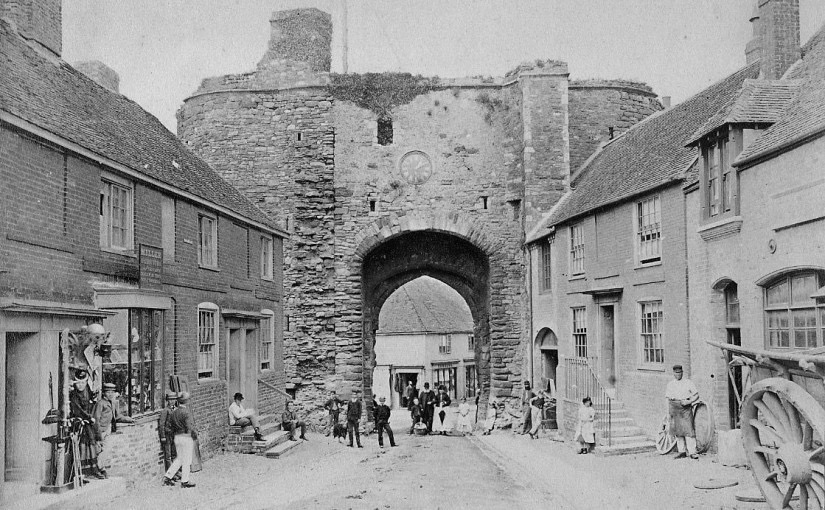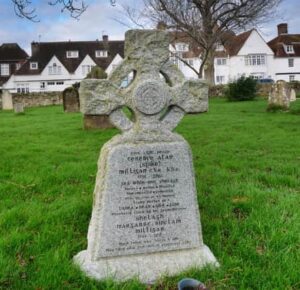History
Built in the 18th Century, The Hope Anchor is part of Rye’s history. Read on to learn more about this historic town, and how it has played host to everyone from smugglers to royalty.
Rye’s key seaside position on the South coast, explains its early historical significance. Sitting where the English Channel is at its narrowest, Rye was an important trading port in the Middle Ages when it was a fully functioning harbour, before it became separated from the sea in Tudor times by gradual silting from the encroaching marshlands.
Its location also meant it was often the first port of call for intruders sailing across from Northwest Europe, with regular attacks from the French and even the Spanish. In recognition of Rye’s role in defence on the south coast, the town was made a Cinque Port in 1336. As such, it became one of five ports on the south coast which received privileges, including exemption from tax, in return for maintaining ships for defence, a scheme originally introduced by Edward the Confessor in the 11th Century.
Some of the invasions were catastrophic; in 1377 a French assault almost completely destroyed Rye by setting it on fire and stealing the bells from St Mary’s Church. Sailors from Rye and Winchelsea reclaimed them in a later revenge raid, and the main bell is now happily restored in the church.
 Rye’s regeneration and fortification continued throughput the 15th and 16thC. This began with the building of the town wall and four gates; Landgate, Strandgate, Baddings Gate and Postern Gate, of which only Landgate remains today. The system was put to the test in 1449 when the French invaded again, once more setting fire to the town, but luckily for the inhabitants of Rye, with less devastation than the earlier large assault.
Rye’s regeneration and fortification continued throughput the 15th and 16thC. This began with the building of the town wall and four gates; Landgate, Strandgate, Baddings Gate and Postern Gate, of which only Landgate remains today. The system was put to the test in 1449 when the French invaded again, once more setting fire to the town, but luckily for the inhabitants of Rye, with less devastation than the earlier large assault.
Besides its enduring significant maritime military role (Rye was once a command centre against a potential invasion by Napoleon) and its successful fishing industry, Rye is also infamous for its smuggling history. Smuggling of goods such as wool, hides, gold and silver out of the country started in the 13thC after Edward 1 introduced the Customs system. When tariffs were significantly expanded in the 17thC, to include everyday items such as candles and beer, smuggling became an even more lucrative business. Rye, with its narrow streets and dark headlands, was an ideal place for the storage of illegal cargoes, and some of its warren of secret passageways and tunnels remain to this day.
It is also no surprise that Rye has historically been a favourite with its many famous visitors. Royals from Edward III in 1360, to Charles II in 1673 and most of the Georges, through to a recent visit by Queen Camilla, prove its enduring popularity and significance with the Royal Family. Queen Elizabeth 1 enjoyed her 3-day stay in 1573 so much, she bestowed the town with the title of “Rye Royale”.
Several famous authors also fell in love with Rye and chose it to set up their homes here, including Henry James and EF Benson who based his famous Mapp and Lucia fictional series of books on Rye and its buildings.
 In more recent years, comedian Spike Milligan discovered Rye whilst visiting the area during filming the Goon show, resulting in him buying and living in “the ugliest house in the world” (his description!) which he also jokingly named “The Blind Architect”. He might have had the last laugh when his house in Dumb Woman’s Lane (also true!) sold for £1.6 million after his death in 2002. You can find his gravestone in Winchelsea churchyard, with its famous inscription “I told you I was ill” engraved in Gaelic.
In more recent years, comedian Spike Milligan discovered Rye whilst visiting the area during filming the Goon show, resulting in him buying and living in “the ugliest house in the world” (his description!) which he also jokingly named “The Blind Architect”. He might have had the last laugh when his house in Dumb Woman’s Lane (also true!) sold for £1.6 million after his death in 2002. You can find his gravestone in Winchelsea churchyard, with its famous inscription “I told you I was ill” engraved in Gaelic.
